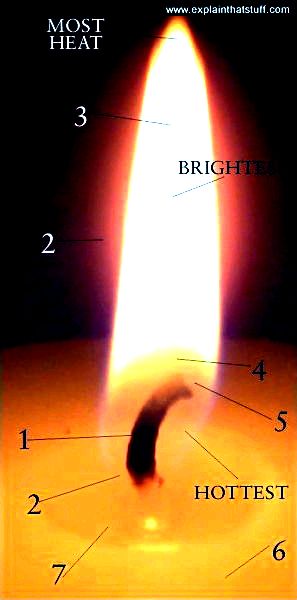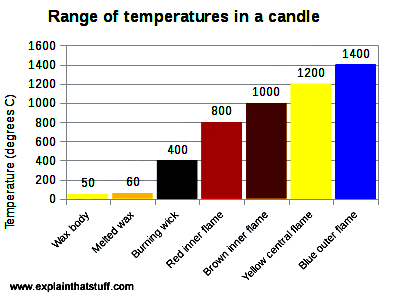
Candle lights may look simple but they are remarkably ingenious. Set fire
towards the wick (the small string poking up at the very top) as well as heat travels
quickly downward toward the wax body from the candle beneath. The wax includes a
low melting point therefore it instantly becomes a hot liquid and
vaporizes, funneling upright round the wick as if it’s
hurrying up a hidden smokestack (chimney). The wax vapor catches light
and burns, delivering a flame high over the wick.
Heat in the flame
travels in three directions at the same time by processes known as conduction,
convection, and radiation. Conduction carries heat lower the wick to
melt more wax towards the top of the candlepower unit. Convection draws hot wax
vapors out of the wick and sucks oxygen in the surrounding air
into the bottom of the flame. The flame also emits invisible beams
of warmth everywhere by radiation. The candle is constantly on the “feed”
around the wax beneath it until it’s all regulated burned away—until all of the
potential energy locked away within the wax is transformed into heat,
light, and chemical waste material.
Which a part of a candle flame may be the hottest?
Here are a few approximate temperatures for aspects of a candle and it is flame. Observe that the precise temperatures
vary a great deal based on all sorts of different facets, particularly the kind of wax that the candle is created but the ambient (air) temperature, and just how much oxygen exists. Do not take these values as absolutely definitive ones that apply in most cases—they’re only a rough guide.
- Wick: 400°C (750°F).
- Blue/white-colored periphery from the flame (as well as the blue cone underneath flame in which the oxygen enters): 1400°C (2550°F).
- Yellow central region from the brightest area of the flame: 1200°C (2190°F).
- BrownishOrred-colored inner area of the flame: 1000°C (1830°F).
- Red/orange inner area of the flame: 800°C (1470°F).
- Body from the candle: 40-50°C (104-122°F).
- Melted pool of wax on the top from the candle: 60°C (140°F).

Chart: There’s an array of temperatures within the relatively small space that the burning candle occupies. Exactly what does that informs us? Aside from other things, it suggests the wax that a candle is created should be a comparatively poor heat conductor.
Possibly surprisingly, the brightest area of the flame isn’t the
hottest. The
blazing area of the flame emits 75 % of their energy as
light and just one fourth as heat (so that you can visit a candle is, at
best, around 75 % efficient like a lamp). The greatest areas of a candle
flame are really nowhere, almost invisible area close to the base,
where oxygen is attracted in, and also the blue/white-colored part round the edge, in which the
flame meets the oxygen-wealthy air throughout it. The flame
will get progressively cooler while you relocate in the outdoors edge toward
the wick. Cooler areas are more dark and colored orange, red, or brown.
The majority of the flame’s heat is delivered toward the end, in which a large
amount of gas is definitely burning and convection is sweeping hot gases
constantly upwards. If you wish to heat something having a candle, hold it
close to the tip.
Resourse: http://explainthatstuff.com/
Remote Control Color Changing Candle How Does It Work?
COMMENTS:
Graeme Hills: Sorry, rather poorly explained in fact. The changing colours are nothing to do with the candle. They are caused by coloured LED’s, activated through a small electronic circuit, which in turn is turned on my Infra red light, picked up by a small sensor next to the candle wick. SImple really… not rocket science.
jjmouse mouse: +Graeme Hills – Wow you’re really smart. what would the world do without your advance intellect.
Salome Thonnard: Cool!!!! What is the components of this candle? I would like to make it.
vishvajeet lattoo: well explained
Deniz Akşimşek: I thought it works with flourescent dyes in the wax.
Cynthia Beaumont: Wow you figured it out!